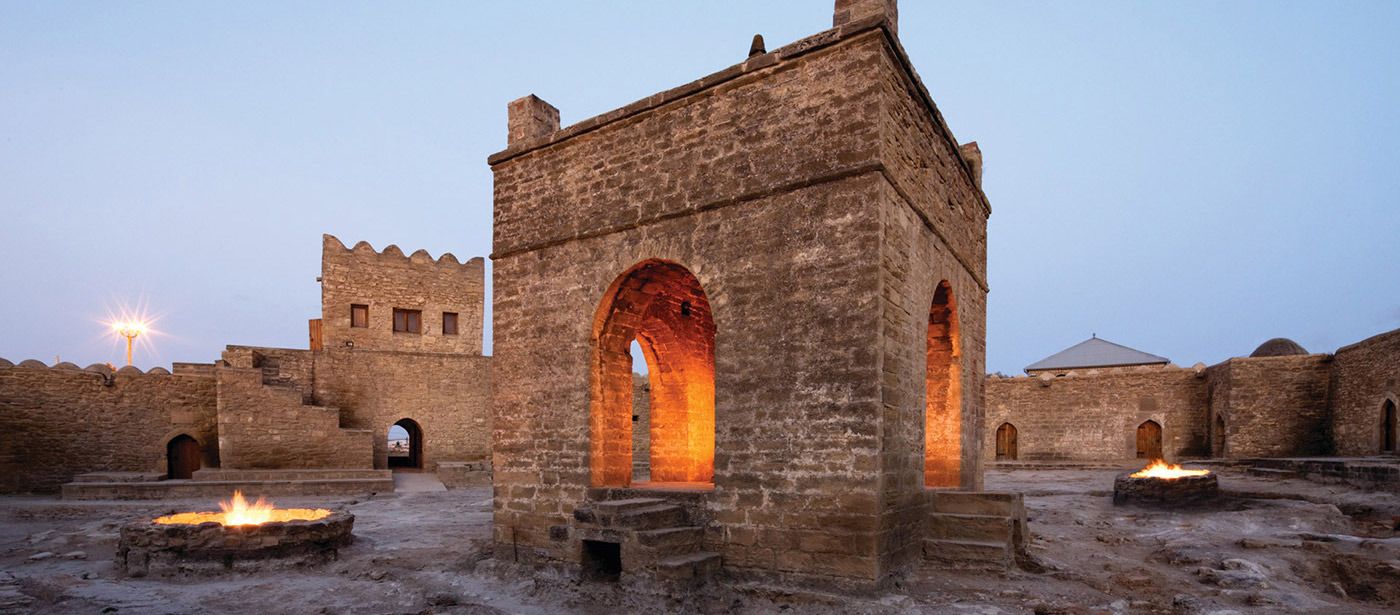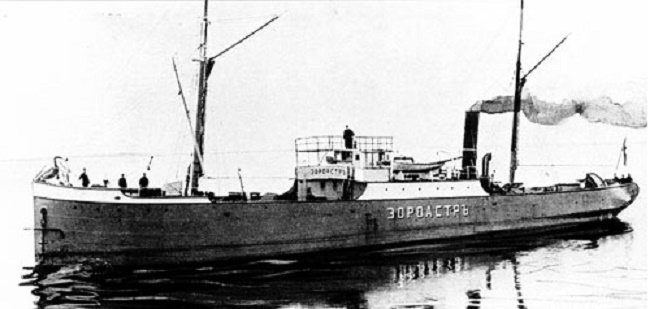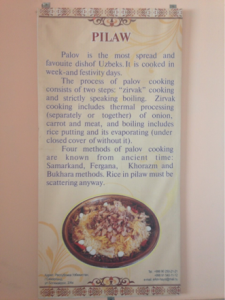Azerbaijan and Uzbekistan – a travel blog
The Central Asian countries of Azerbaijan and Uzbekistan share many similarities. However, as a tourist, I was struck by their differences.
Note: For some, Azerbaijan counts as being in the Caucasus, along with Georgia and Armenia. However, my guide in Azerbaijan spoke of his country as being in Central Asia.
The similarities between Azerbaijan and Uzbekistan:
The languages spoken in Azerbaijan and Uzbekistan, namely Azerbaijani and Uzbek, are both Turkic.
Both countries were Soviet Socialist Republics until the break up of the Soviet Union in 1991.
They’ve both switched their alphabets from Cyrillic to Latin, although there is still more Cyrillic to be seen in Uzbekistan than in Azerbaijan.
The food is similar. On any menu you find cucumber and tomato salads, various kinds of kebab, baklava for dessert, and the ever-present main course plov (pilaf).
Here’s the poster for the plov restaurant my guide, Kamal, and I went to in Samarkand, Uzbekistan:
which is next to a more-or-less understandable description of how the dish is prepared:
Kamal said that the army of Alexander the Great likely introduced this dish to the region by soldiers who were dying of food poisoning from the local food and needed something easy to digest.
Furthermore,
In both countries approximately 90% of the population is Muslim.
At the same time, they both celebrate the ancient rite of Novruz:
Novruz is a New Year’s celebration that comes in the springtime and is like Easter only minus Jesus and plus fire and water. You’re supposed to jump over fire and water in order to cleanse yourself and put bad things behind you.
And both countries claim to be the origin of fire worship.
Here’s Ateshgah, the fire worshipper’s temple, just outside the city limits of Baku. It’s origins date back several thousand years, although the present structure dates back a couple hundred:

The temple was also a pilgrimage center for Zoroastrians who believed in four holy elements, the most important being ateshi ‘fire.’ The others are air, water and earth.
We could call all these intra-country similarities ingrained, like marbling in meat.
The difference between Azerbaijan and Uzbekistan:
It can be summed up in one word: oil.
They both have oil only Azerbaijan has more and a more developed industry.
The first industrial output of oil anywhere in the world was in Baku in 1847. Pennsylvania’s came in 1853.
In 1876 Robert and Ludvig Nobel, brothers of Alfred, founded Branobel, an oil-producing company in Baku. Their insignia displays the Ateshgah:
In 1878 Ludvig built the world’s first successful oil tanker and named it Zoroaster.

The Cyrillic letters spell Zoroaster
In 1882 the brothers built their Villa Petrolea in Baku:
I’ve already written about Baku’s modern architecture, its upscale jewelry and designer stores and its Ferrari, Lamborghini and Aston Martin outlets.
See: Azerbaijan Architectural – a travel blog
Perhaps it says it all that Baku has a Four Seasons Hotel.
I can’t draw a straight line from Azerbaijan’s oil money to its progressive social history, but it remains the case that:
Azerbaijan was the first place in Central Asia to educate girls. The first girl’s school dates from the end of the 19th century. A Polish architect designed the school in Baku, pictured here:
It is no longer a girl’s school but an academy of science and a beautiful one at that.
-Azerbaijan was the first democracy in Central Asia, established in 1918. (It lasted 23 months before it was incorporated into the Soviet Union in 1920.)
-Azerbaijan was the first government in Central Asia to give women the vote, also in 1918.
Note: The Nineteenth Amendment to the U.S. Constitution stating that the right to vote cannot be abridged or denied on account of sex came in 1920.
There is no similar progressive story to tell about Uzbekistan.
All in all, oil has given Baku a modern, even Western look with its first oil boom fin-de-siècle French (and Polish) architecture, which is now allied to modern architecture. Oil has also made it possible to restore its historic center.
By contrast, Tashkent has no historic center because late 19th-century earthquakes leveled it. It has a generic, post-Soviet look with broad streets and plazas, no fancy shopping.

However, there are lots of parks and green space in Tashkent, which is a plus.
Note: The story of oil is told in David Yergin’s The Prize. Epic Quest for Oil, Money and Power (1990). You can see the 8-part PBS version of it on YouTube.
P.S. While in Baku I had my hair done at the Four Seasons spa. Color, cut and blow-dry was about 90,000 manat ($60). I tipped $10.
I’ve now increased my salon experiences around the world.
See: Getting My Hair Done Around the World
See also: All My Asia Blogs
Title Image: By Abbaszade656 (Own work) [CC BY-SA 4.0 (http://creativecommons.org/licenses/by-sa/4.0)], via Wikimedia Commons
See also:
Want More From Julie? Read her Time Slip Series:
Get the first book: The Blue Hour on Amazon Today!
Categorised in: Adventure, Central Asia
This post was written by Julie Tetel Andresen
You may also like these stories:
- google+
- comment









